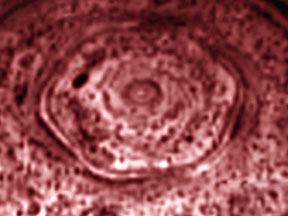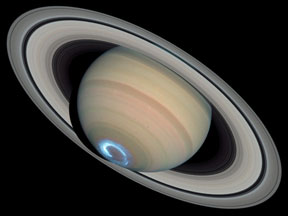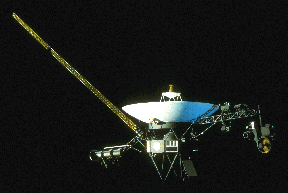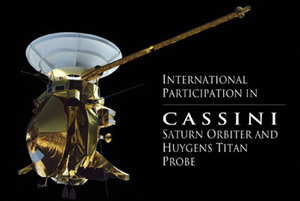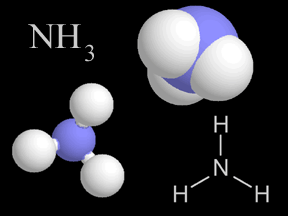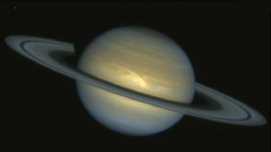Click on image for full size
Image courtesy NASA/JPL/University of Arizona.
Saturn's Strange Hexagon
Astronomers have discovered a bizarre, hexagon-shaped feature in the clouds of Saturn near the planet's North Pole. The feature was first seen in images returned by the Voyager spacecraft in the 1980s, and was later observed using the Hubble Space Telescope. In each case, however, the hexagon was hard to see - it was near Saturn's limb (edge) as viewed from each perspective (Voyager's and Hubble's) - and scientists weren't quite sure what to make of their observations. Now, the Cassini spacecraft that is currently orbiting Saturn, has returned an image of this strange phenomenon as viewed from above Saturn's North Pole. And scientists still aren't quite sure what to make of it!
They think the hexagon, which was imaged by an infrared camera on Cassini in October and November 2006, is some sort of wave in Saturn's atmosphere about 75 kilometers beneath the planet's visible cloud tops. Astronomers are still not sure why the feature has such a regular shape; nor why it is so long-lived, having been around since the time of Voyager's flyby in the early 1980's.
The infrared Cassini images of the feature show heat rising from Saturn's interior. Light colored areas are warmer, indicating that the IR radiation in those areas is escaping relatively unimpeded. Darker areas are places where clouds in Saturn's upper atmosphere are at least partially blocking the IR "light"; in effect, these are silhouettes of the "backlit" clouds. These clouds lie somewhere between 75 and 100 kilometers (47-62 miles) deeper in Saturn's atmosphere than the typical ammonia hazes and clouds seen in visible light wavelength views of the ringed planet's upper atmosphere. Scientists think the lower clouds that form the silhouettes in the IR images are likely composed of ammonia-hydrosulfide, although some may be composed of water, as is the case on Earth.
Notice how the hexagon is bright, but is bracketed on either side by dark areas. This apparently indicates that the hexagon is a relatively clear area in the atmosphere that allows us to see deeper into Saturn's interior. It also shows us that fairly thick clouds form on either side of this clear area. Scientists don't yet know the significance of this, but these clues may eventually help them figure out the nature of Saturn's strange hexagon.
The hexagon is located at roughly 78 degrees north latitude. The image shown on this page was captured by Cassini on October 29, 2006, from an average distance of 902,000 kilometers (560,400 miles) above the cloud tops of Saturn.


